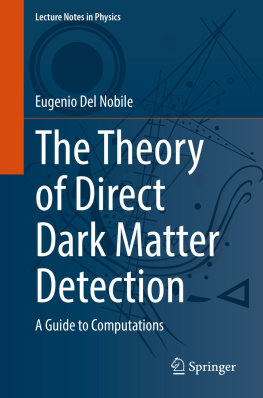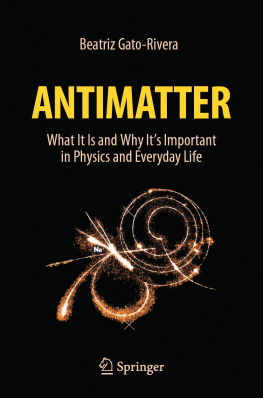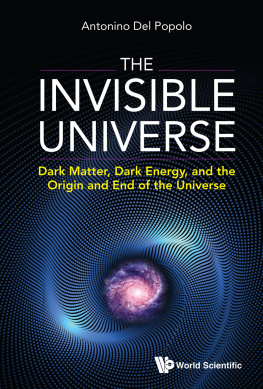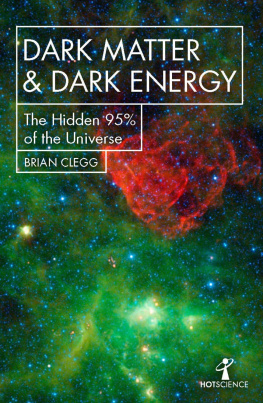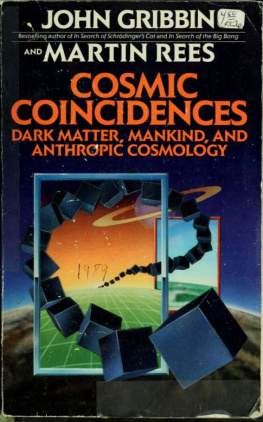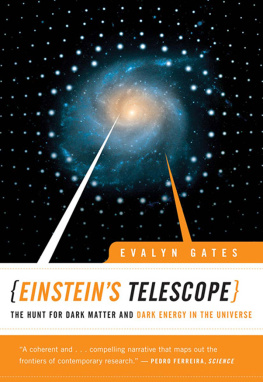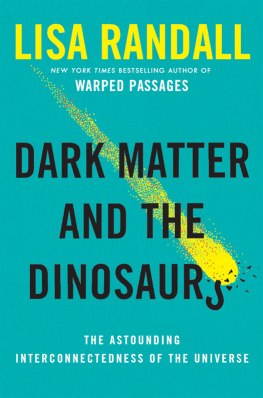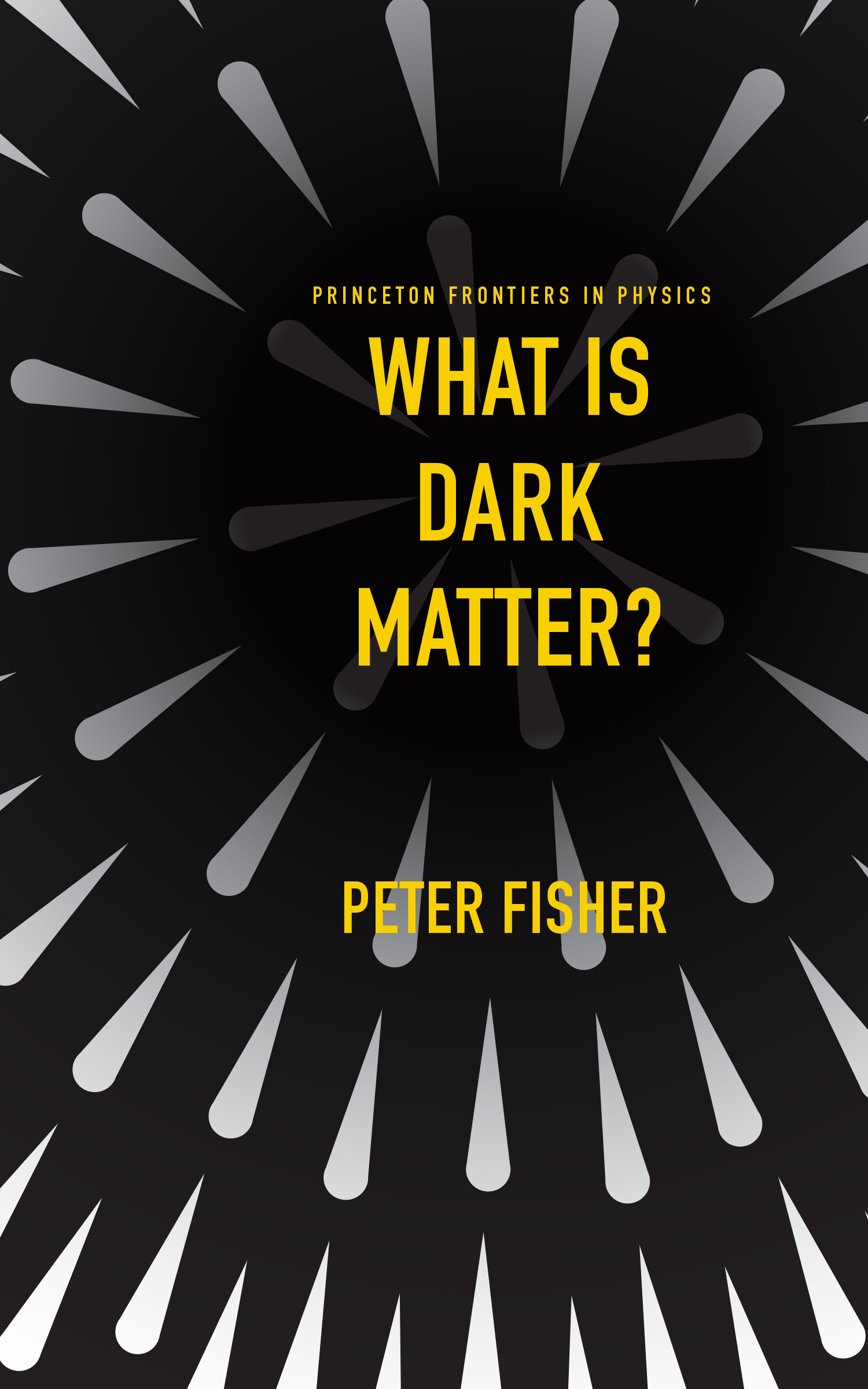WHAT IS DARK MATTER?
PRINCETON FRONTIERS IN PHYSICS
Abraham Loeb, How Did the First Stars and Galaxies Form?
Joshua Bloom, What Are Gamma-Ray Bursts?
Charles D. Bailyn, What Does a Black Hole Look like?
John Asher Jonson, How Do You Find an Exoplanet?
Paul Langacker, Can the Laws of Physics Be Unified?
Peter Fisher, What Is Dark Matter?
WHAT IS DARK MATTER?
PETER FISHER
PRINCETON UNIVERSITY PRESS
PRINCETON & OXFORD
Copyright 2022 by Princeton University Press
Princeton University Press is committed to the protection of copyright and the intellectual property our authors entrust to us. Copyright promotes the progress and integrity of knowledge. Thank you for supporting free speech and the global exchange of ideas by purchasing an authorized edition of this book. If you wish to reproduce or distribute any part of it in any form, please obtain permission.
Requests for permission to reproduce material from this work should be sent to
Published by Princeton University Press
41 William Street, Princeton, New Jersey 08540
99 Banbury Road, Oxford OX2 6JX
press.princeton.edu
All Rights Reserved
Library of Congress Cataloging-in-Publication Data
Names: Fisher, Peter, 1959- author.
Title: What is dark matter? / Peter Fisher.
Description: 1st. | Princeton: Princeton University Press, 2022. | Series: Princeton frontiers in physics | Includes bibliographical references and index.
Identifiers: LCCN 2021051624 (print) | LCCN 2021051625 (ebook) | ISBN 9780691148342 (hardback) | ISBN 9780691185910 (ebook)
Subjects: LCSH: Dark matter (Astronomy)
Classification: LCC QB791.3.F57 2022 (print) | LCC QB791.3 (ebook) | DDC 523.1/126dc23/eng/20211217
LC record available at https://lccn.loc.gov/2021051624
LC ebook record available at https://lccn.loc.gov/2021051625
Version 1.0
British Library Cataloging-in-Publication Data is available
Editorial: Ingrid Gnerlich and Whitney Rauenhorst
Production Editorial: Mark Bellis
Text and Jacket Design: Jessica Massabrook
Production: Danielle Amatucci
Publicity: Matthew Taylor and Charlotte Coyne
Copyeditor: Cyd Westmoreland
This book is for
Jane Ann and Olympia,
my guiding lights.
CONTENTS
- )
WHAT IS DARK MATTER?
INTRODUCTION: THE DARK MATTER PROBLEM
Suppose you became aware that there were specters, invisible beings, living in your house. You cannot see, hear, or feel them, but you know they are there, because they move things around your home, open and close doors, and change the room temperature. You begin to notice patterns for these changes, as if they are governed by rules.
After a time, knowing their patterns, you begin to learn the rules. You learn how to predict what changes they will make, and when they will make them. As more time passes, you come to suspect that there are many spectersmaybe ten for each person in your house. The specters have always dominated your environment, and you and your family have always responded to them without knowing it.
Your curiosity about the specters grows, and you try to learn more about themwhat are they made of? Where did they come from? What do they want? Still, you never sense them directly, but only learn about them through the changes they make in your (their?) home. The specters shape your environment, but you do not shape theirs. They are completely unresponsive to anything you do to communicate with or learn about them. You imagine that the specters have always been there. They are not intruders, but part of the natural order of things.
Most of us would find such a circumstance very strange, perhaps troubling, and certainly very frustrating. How could we have coexisted with so many specters for so long without knowing it? Why is it so difficult to learn about them? Where did they come from?
Over the twentieth century, . This book uses the term dark matter. Dark matter created the shape and structure of galaxies, clusters of galaxies, and the universe itself.
The goal of this book is to make sense of the specters that represent dark matter: to explain how astronomers came to know about it; how theoreticians uncovered how dark matter shaped the largest structures in our universe through gravity; and how physicists and astronomers are navigating the complex, frustrating hunt to understand more about dark matter.
I will use the terms that forms stars and generates the light that we observe through telescopes. Dark matters invisibility means that it does not form stars or generate light (hence the term dark matter). More broadly, dark implies that dark matter does not significantly interact with visible or normal matter in any way other than through gravity.
Over the past 85 years, that formed in the early universe from matter fluctuations in space-time could explain dark matter.
In the 1930s, a few astronomers began to understand that the amount of visible matter in clusters of galaxies could not explain the motion of the galaxies in their cluster. The total mass of the newly discovered invisible matter appeared to be tens or hundreds of times the visible mass of the stars. In the 1970s, measurements of how stars move inside galaxies led to the idea that some unseen gravitating matter causes the visible stars to orbit around the center of their galaxy faster than predicted from just the mass of the stars alone. To explain this concept, and set the stage for the rest of the book, then lays out the evidence for dark matter from astronomical observations.
In of particle physics. The three Standard Model forces act on quarks and leptons that make up normal matter.
The Standard Model explains almost all the observed interactions between particles made since Henri Becquerel first observed radioactive decay in 1896. Albert Einstein and his successors left us with an excellent classical theory of gravity, but theorists have been unable to find a quantum theory of gravity, leaving us with a patchwork of theories: the quantum mechanical Standard Model for quarks and leptons, and classical gravity that acts on all matter. Dark matter does not fit anywhere in our patchwork: None of the known particles from the Standard Model have the properties of dark matter; and classical gravity does not predict particles, as gravity acts on all matter.
follows the experiments that led to the conclusion that dark matter does not fit into our current view of particle physics, leaving the problem of finding out what dark matter is.
Over the past 30 years, many ideas have emerged to explain the effects of dark matter. This book focuses mostly on two hypothesized new particles, called describes the idea behind axions, how axions could be dark matter, and how physicists search for axions.
This book does not end in with a grand revelation of the properties of dark matterthese still elude my experimental colleagues and me. However, I hope that you will gain a deeper understanding of the dark matter problem and what a triumph it will be when we do learn something new about dark matter.
The glossary at the end of the book provides brief explanations of words in bold.
1
SOME BACKGROUND
Gravity plays a central role in everything that happens in the universe, and we will need to know a little about gravity to understand the dark matter story. The original ideas of gravity came from Galileo Galilei and Johannes Kepler in the early 1600s. Isaac Newton developed the full theory in 1687, explaining both the motion of objects acted on by a force and how massive bodies produce the forces that act on one another. In the nineteenth century, experiments began to show that Newtons laws of motion were not strictly obeyed, leading to Albert Einsteins Special Theory of Relativity in 1905, which gave universal laws of motion, with Newtons laws as approximations for objects moving at much less than the speed of light. In 1916, Einsteins General Theory of Relativity showed that gravity produced its effects through changes in the structure of space and time, with Newtons law of gravitation giving an approximation for weak gravitational forces. Einsteins theory has remained unmodified ever since.


